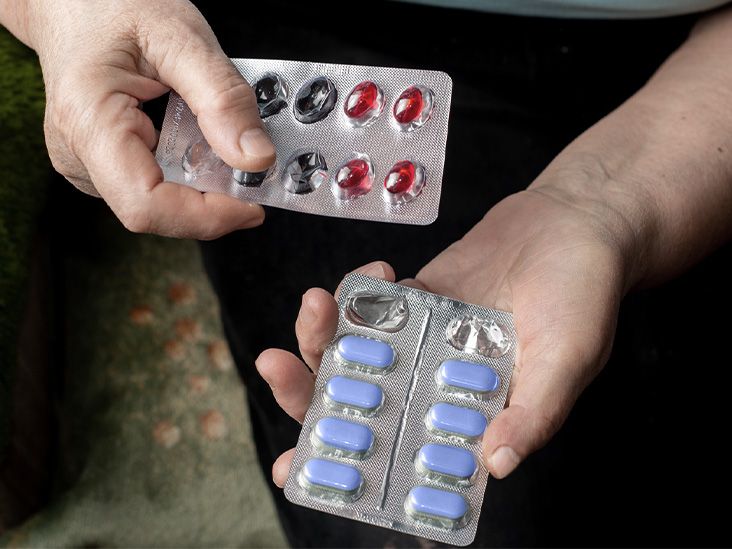Let's face it navigating healthcare benefits after retirement can feel like trying to solve a Rubik's cube in the dark. Between doctor visits, medications, and insurance paperwork, it's easy to feel overwhelmed. But here's something that might make your day a little brighter: if you're enrolled in a Medicare Advantage plan, you might already have access to a Medicare OTC card, and you might not even know it!
Think of this card as your friendly neighborhood helper for everyday health items. We're talking about covering things like vitamins, pain relievers, and first aid supplies without dipping into your own pocket. Sounds pretty great, right? Let me walk you through everything you need to know in plain English, no insurance jargon required.
Understanding Your OTC Benefits
So what exactly is this Medicare OTC card we're talking about? Well, "OTC" stands for "over-the-counter," which basically means items you can buy without a prescription. Think of it like having a little health fund specifically for those everyday items that keep you feeling your best.
Here's the important part to remember: these benefits come exclusively through Medicare Advantage plans, also known as Medicare Part C. If you're only on Original Medicare (Parts A and B), I hate to break it to you, but you won't have access to this perk. It's one of those extras that makes Medicare Advantage plans pretty attractive, if I'm being honest.
Different insurance companies handle these cards in their own special ways. Some give you a physical card that looks like a credit card, while others might set up a spending account or even handle orders through mail delivery. Companies like Aetna, UnitedHealthcare, Humana, and Healthfirst all offer various versions of these benefits each with their own rules and allowances.
| Provider | Card Type | Allowance Frequency | Rollover Allowed? |
|---|---|---|---|
| Aetna | OTC Card | Quarterly/Monthly | Plan-specific |
| UnitedHealthcare | UCard | Monthly/Quarterly | No |
| Humana | Spending Account or Mail Order | Monthly/Quarterly | Varies |
| Healthfirst | OTC / OTC Plus | Quarterly/Monthly | No |
As you can see, there's quite a bit of variety in how these work. Some plans even go above and beyond with enhanced benefits Healthfirst's OTC Plus program, for instance, lets you use your allowance for things like fresh produce and even some home utilities. Pretty cool, right?
Checking Your Eligibility
Now, I know what you're thinking: "This sounds amazing, but how do I know if I actually qualify?" Fair question! The first thing you need to check is whether you're enrolled in a Medicare Advantage plan that includes OTC benefits. Sounds simple, but you'd be surprised how many people have benefits they're not even aware of.
The best way to confirm is to dig out that Evidence of Coverage document it's like the instruction manual for your insurance plan. You can usually find this online through your insurer's member portal, or you can request a physical copy. Flip to the section about preventive and wellness benefits, and you should see information about any OTC allowances.
If you're not currently enrolled in a plan with these benefits, don't panic! During Medicare's Open Enrollment Period (October 15 through December 7 each year), you can switch to a different Medicare Advantage plan that offers the OTC benefit. It's a bit like shopping for a new phone plan you want to make sure you're getting the features that matter most to you.
Let me share something Maria from Florida told me recently: "I got my OTC card last year after switching to a new Medicare Advantage plan. Now I order vitamins, bandages, and other supplies straight to my door each quarter for FREE." She sounded so pleased with this discovery, and honestly, I can't blame her!
Getting Your Card Activated
Alright, let's say you've confirmed you qualify what's next? Well, your card won't work right out of the envelope (I learned that the hard way myself!). Most insurance companies require you to activate it first, which is actually a pretty straightforward process.
Typically, you'll want to call the member services number printed on the back of your card. Have your Medicare number handy, and they'll walk you through the activation process. Some insurers also let you activate online through their member portals or mobile apps Aetna and Humana both have pretty user-friendly websites for this kind of thing.
Pro tip from someone who's been there: activate your card as soon as you receive it! I once waited until I was at the checkout counter to activate mine, and let's just say that made for an awkward conversation with the cashier. Trust me, do it ahead of time to avoid any shopping trip drama.
Once activated, you can start using your card at participating retailers. We're talking major chains like Walgreens, CVS, Walmart, and Rite Aid. Some providers also have online portals where you can order items directly UnitedHealthcare's UCard Hub is a good example of this. Pretty convenient when you don't feel like braving the crowds, isn't it?
Smart Shopping with Your Card
Here's where it gets really fun figuring out what you can actually buy with your Medicare OTC card. The list is pretty generous when you think about it. We're talking about everyday health and wellness items that most of us need anyway.
Your basic eligible items include things like multivitamins, calcium supplements, fish oil, and other nutritional products. Pain relievers like ibuprofen and acetaminophen are covered, as are common cold and flu remedies. First aid supplies like bandages, thermometers, and cotton balls are also typically included.
| Category | Examples |
|---|---|
| Vitamins & Supplements | Multivitamins, Calcium, Fish Oil |
| Pain Relief | Ibuprofen, Acetaminophen, Aspirin |
| First Aid Supplies | Bandages, Thermometers, Cotton Balls |
| Cold/Flu Remedies | Cough drops, Tissues, Nasal Sprays |
| Personal Care Items | Toothbrushes, Deodorant, Shampoo (limited plans) |
Depending on your specific plan, you might be able to use your allowance for personal care items like toothpaste, deodorant, and even some dental products. Some enhanced programs, particularly Healthfirst's OTC Plus, are surprisingly flexible I've heard of people using theirs for fresh fruits and vegetables, which is brilliant for promoting healthy eating habits.
Before you start shopping, though, I highly recommend checking your insurer's online catalog of eligible items. This will save you from that awkward moment of discovering something isn't covered when you're already at checkout. I know someone who learned this lesson the hard way when their toothpaste and cavity rinse weren't approved quite a surprise when you're expecting everything to go smoothly!
Avoiding Common Pitfalls
While these cards are pretty awesome, there are a few things to keep in mind to make the most of your benefits. First and foremost, most of these cards operate on a "use it or lose it" basis. Your quarterly or monthly allowance typically expires if you don't use it within that timeframe. Think of it like a gift card from your generous insurance company you wouldn't let that expire, would you?
Another thing to be aware of: these cards can't be used for prescription medications. That might seem obvious, but I've met people who tried to use their OTC allowance at the pharmacy counter for their prescriptions. It doesn't work that way prescriptions go through your regular Part D coverage, while OTC items use this separate benefit.
Also, while the list of eligible items is pretty generous, there are definitely things that won't be covered. Cosmetics, pet food, bakery goods, and cigarettes are all big no-nos. Most personal hygiene products fall into this category too, unless your specific plan explicitly covers them.
One of the biggest mistakes I see people make is spending their entire allowance in one category early in their benefit period. For instance, buying all their vitamins and supplements in January when they still have eleven months left. While there's nothing technically wrong with this approach, you might miss out on covering other helpful items throughout the year.
Making the Most of Your Benefits
The real magic happens when you treat your Medicare OTC card like the valuable benefit it is. Instead of thinking of it as "free money," try viewing it as an opportunity to enhance your health and wellness routine. Maybe that means investing in quality supplements, keeping your first aid kit well-stocked, or trying new personal care products that could improve your daily routine.
Here's a strategy that works well for many people: plan your purchases throughout your benefit period instead of blowing through everything at once. If you have a quarterly allowance, consider what items you'll need throughout those three months and spread your purchases accordingly. This approach helps ensure you're covering a variety of health needs rather than focusing on just one area.
I love encouraging people to think of this benefit as part of their overall wellness plan. Are you trying to improve your nutrition? Use your allowance for quality vitamins and supplements. Need to update your first aid supplies? Now's the perfect time. Want to try that new toothpaste your friend recommended? Why not?
Some people even use their OTC cards strategically throughout the year. For example, they might stock up on cold and flu remedies in the fall, first aid supplies in the spring, and general wellness items during the summer months. It's all about working with the system to make it work best for your lifestyle.
Wrapping It All Up
When I first learned about Medicare OTC cards, I have to admit I was skeptical. It seemed too good to be true free money for health items? But after helping countless people navigate this benefit, I can tell you it's very real and very valuable for those who qualify.
The key is understanding how your specific plan works, activating your card properly, and making thoughtful choices about how to use your allowance. Whether you prefer shopping in-store or ordering online, there are options that fit your lifestyle. And with the variety of eligible items, you can really customize your approach based on your health priorities.
Remember, this benefit is there to make your life easier and healthier not to add complexity to an already confusing healthcare landscape. Take some time to familiarize yourself with how your card works, what you can purchase, and when your allowance resets. A little bit of planning upfront can save you a lot of confusion (and potentially wasted benefits) down the road.
If you're not currently enrolled in a Medicare Advantage plan with OTC benefits, it might be worth exploring your options during the next enrollment period. Sometimes the smallest changes can make the biggest differences in your overall healthcare experience.
Ultimately, these cards represent something I really appreciate about modern Medicare there are genuine efforts to support seniors in maintaining their health and independence. From covering gym memberships to providing OTC allowances, these benefits acknowledge that staying healthy involves more than just treating illness when it occurs.
So go ahead, activate that card, and start exploring what's available to you. Trust me, once you start using these benefits, you'll wonder how you ever managed without them. Your future self will thank you for taking advantage of every resource available to support your health and wellbeing.
Disclaimer: This article is for informational purposes only and does not constitute medical advice. Always consult with a healthcare professional before starting any new treatment regimen.
Related Coverage
Navigating Medicare in Ohio doesn't have to be hard. Find the right coverage with our simple guide to plans, costs, and enrollment....
Research shows crossword puzzles may help strengthen the brain and slow cognitive decline in those with Parkinson's disease. Learn how crosswords can aid as a supplement to Parkinson's treatment....
Find the best Medicare in Colorado options for your needs. Compare plans, save money, and make confident health coverage decisions....
Coping with retinol irritation like burning, redness, dryness? Learn how long symptoms last, when to worry, and get aftercare tips to heal skin post inflammation....
Avoid unexpected Medicare Part B penalty costs. Calculate your potential fees and learn how to prevent lifelong premium increases....
Get details on 2025 AARP Medicare Part D plans, coverage changes, and how to save on prescription drugs with smart plan choices....
Blood pressure drawings use visuals to demonstrate physical concepts behind key measurements. Learn how these medical illustrations help diagnose issues and empower patient self-care....
Navigate Medicare in Arkansas with confidence. Get clear, simple help choosing the best healthcare coverage for your needs....
Medicare after divorce can be confusing. Find out if you qualify for premium-free Part A and how to enroll without stress....
Get clear, simple help with Medicare in Illinois. Learn about coverage options, enrollment periods, and how to choose the right plan for you....









